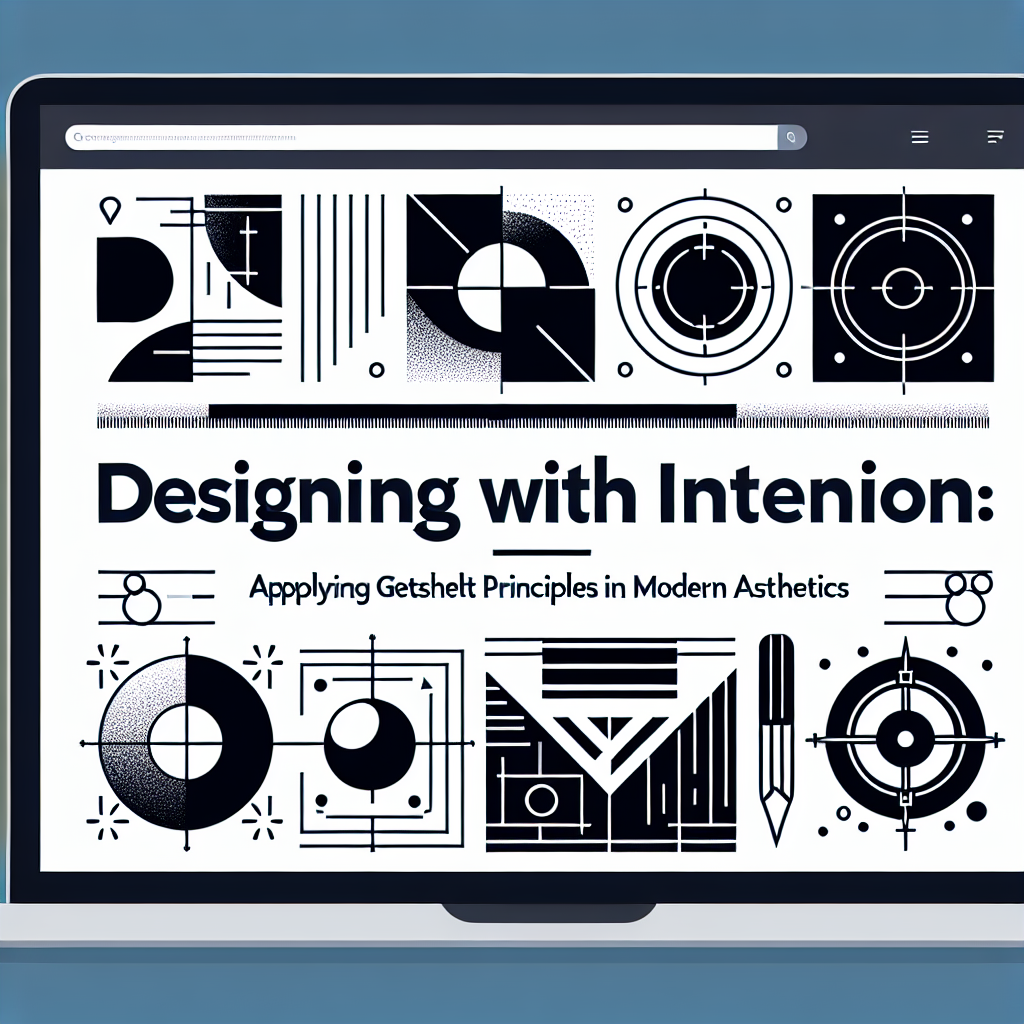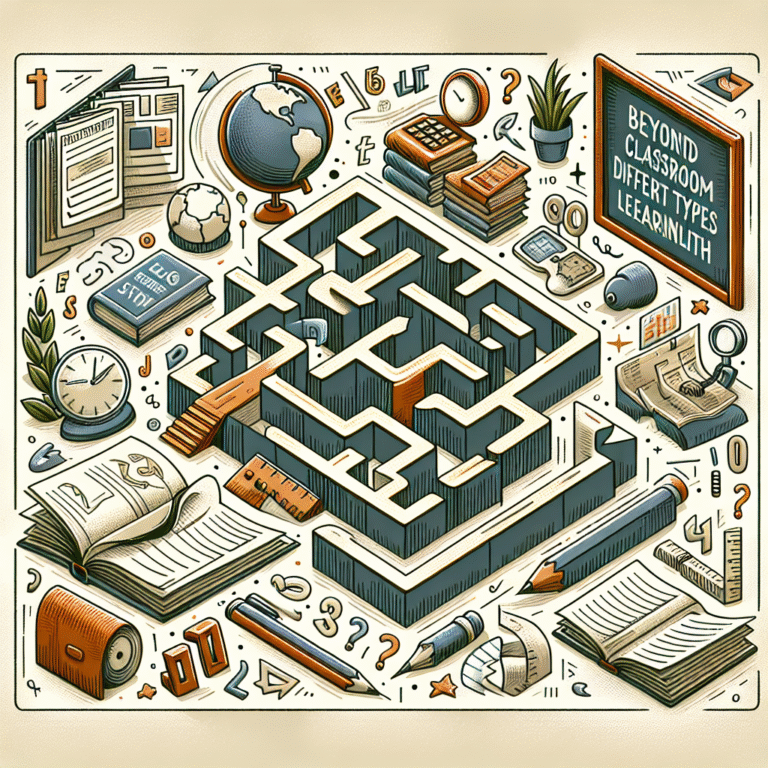
Introduction
In a world saturated with visual stimuli, the art of design has transformed from mere aesthetics to a powerful communication tool. This shift emphasizes the importance of creating designs that resonate with users on a deeper level. By exploring designing with intention, particularly through the lens of Gestalt principles, designers can create experiences that are not only beautiful but also intuitive and functional. With this article, we will delve into the rich tapestry of Gestalt principles and their applications in modern aesthetics, focusing on how they foster meaningful connections between design elements and the viewer.
The Essence of Gestalt Principles
What Are Gestalt Principles?
Gestalt psychology emerged in the early 20th century, providing foundational theories regarding perception. The core idea is that the human brain tends to organize visual elements into groups or unified wholes, rather than viewing them as isolated components. This phenomenon is encapsulated in the phrase "the whole is greater than the sum of its parts."
Here are the main Gestalt principles relevant to design:
Figure-Ground Relationship: This principle describes the organization of visual elements into a figure (the focal point) and ground (the background). The ability to distinguish between figure and ground is crucial for effective design.
Similarity: Elements that are similar (in shape, color, or size) are perceived as part of a group, allowing designers to create a sense of unity in their work.
Proximity: Items that are close together are perceived as a group. This principle can guide user experience and navigation structures in digital design.
Closure: The mind fills in gaps to create a complete image, emphasizing the importance of how designs can use forms to suggest continuity.
Continuity: The eye is drawn along lines or curves, which creates a visual flow through a design.
- Common Fate: Elements moving in the same direction or at the same speed are perceived as related. This principle can enhance storytelling in design.
Relevance in Modern Aesthetics
In today’s fast-paced digital landscape, designing with intention becomes integral to creating visual hierarchy and clarity. Designers who effectively apply Gestalt principles can craft engaging, navigable, and memorable user experiences across various mediums—from web design to branding.
Case Studies: Applications of Gestalt Principles
Case Study 1: Google’s Search Interface
Google’s search interface serves as an exceptional example of designing with intention. The company utilizes the figure-ground relationship to make the search bar the focal point of the interface, thus improving user experience and intuitiveness. The simplicity of the design reduces cognitive load, allowing users to focus solely on searching.
Analysis
The strategic use of negative space reinforces the figure-ground relationship, ensuring that users are not overwhelmed by clutter. This exemplifies how Gestalt principles can lead to a functional interface that guides users directly to their objectives.
Case Study 2: Airbnb’s Listing Layout
Airbnb employs proximity and similarity in its interface design to group listings and create visual cohesion. The consistent card design aids in the perception of related information, making it easier for users to compare options effectively.
Analysis
This practical application of Gestalt principles enhances user comprehension and decision-making, proving that thoughtful design can significantly impact user behavior.
Case Study 3: Apple’s Product Pages
Apple is renowned for its minimalist aesthetic, exemplifying the principle of closure. The design often involves partially obscured product images that encourage the viewer’s mind to fill in the gaps, creating intrigue and enhancing engagement.
Analysis
By applying this principle, Apple cultivates a sense of curiosity, prompting users to explore further. This approach illustrates the power of designing with intention to create a memorable brand experience.
Harnessing Gestalt Principles in Everyday Design
Understanding how to implement Gestalt principles in your projects can elevate your designs dramatically. Let’s break down some strategies.
Prioritize Clarity with Figure-Ground Relationships
When designing layouts, always define what the primary focal point is. Utilize color contrast, spacing, and orientation to differentiate the figure from the background. This is essential in presentation design, where clarity is key.
Use Proximity to Create Comfortable Groupings
Leverage proximity to guide users through your design. For example, in a website or app, close placement of navigational elements indicates they belong together, minimizing the effort it takes for users to find what they need.
Emphasize Similarity for Consistency
When designing a brand, ensure that your visual elements reflect similar traits—like color palettes and typography—to foster brand recognition and trust. This consistency will resonate with users and encourage a more cohesive experience.
Creating Flow with Continuity
To guide users through a digital interface, make use of continuous lines and shapes that naturally lead the eye from one element to the next. This strategy not only enhances navigation but also creates an intuitive user experience.
| Gestalt Principle | Application in Design | Example |
|---|---|---|
| Figure-Ground | Define clear focal points | Google Search Interface |
| Similarity | Group related elements | Airbnb Listing Layout |
| Proximity | Visual clustering | Menu designs |
| Closure | Intrigue user curiosity | Apple Product Pages |
| Continuity | Create eye flow | Infographic layouts |
Conclusion: Inspiring Intentional Design
The principles of Gestalt offer timeless insights into human perception and design. When we focus on designing with intention, we frame our designs in ways that optimize user experience, spark engagement, and foster emotional connections.
As we move forward in a rapidly evolving landscape, embracing these principles equips designers with the tools needed to enhance their work profoundly. Whether you’re creating a website, branding a business, or designing an app, remember that every element plays a role in the user’s journey.
Frequently Asked Questions (FAQs)
1. How do I begin applying Gestalt principles in my designs?
Start by analyzing existing designs, identifying how they use these principles, and practice implementing them in your own projects.
2. Are Gestalt principles suitable for all types of design?
Yes, while these principles are rooted in visual perception, they can be adapted for various mediums, including print, web, and product design.
3. Can applying Gestalt principles improve user experience?
Absolutely! When users can easily navigate and understand design, their experience is greatly enriched, potentially leading to higher satisfaction and engagement.
4. What if my design feels too complex to apply these principles?
Begin by simplifying your layout. Identify key elements and use Gestalt principles to create a clear structure. Gradually incorporate complexity once the foundation is solid.
5. Are there any tools to help with applying these principles effectively?
Design tools like Adobe XD, Sketch, and Figma include features that allow for easy manipulation of space, alignment, and proximity, making it simpler to apply Gestalt principles.
By understanding and applying Gestalt principles, you’re not just crafting a design; you’re creating an experience. So go forth, and let your creativity flourish with intention!














